This is the fifth blog of our six-part series on how to efficiently operate your e-commerce business with in-house expert Suveen Suri. In our E-commerce Innovation Lab, she’ll walk you through how to create a hassle-free returns policy and implement efficient operational processes to realize the returns solutions that work best for your business and customers.
Returns are a reality of e-commerce. But did you know that 79 per cent of Canadian online shoppers will stop shopping with a merchant after a bad returns experience?1 This means that your returns strategy and experience is a critical opportunity to improve the customer experience, enhance your brand, and instill loyalty in your customers. With a top-notch returns experience, you can get your customers feeling good about your brand and coming back for more.
Let’s start with the policy. How do merchants create a returns strategy that’s hassle-free?
Hassle-free returns for your business and customers
Even the best possible returns policy won’t do much if you don’t clearly articulate it to customers. Wherever you describe your policy, make sure your messaging is complete, clear and easily accessible. You’ll want to list the simple steps customers need to follow in order to return an item. Be sure to describe the options available to customers to return their items. Offering options like in-store returns, or returns via your delivery partner’s footprint, gives customers the ability to tailor their experience around their needs.
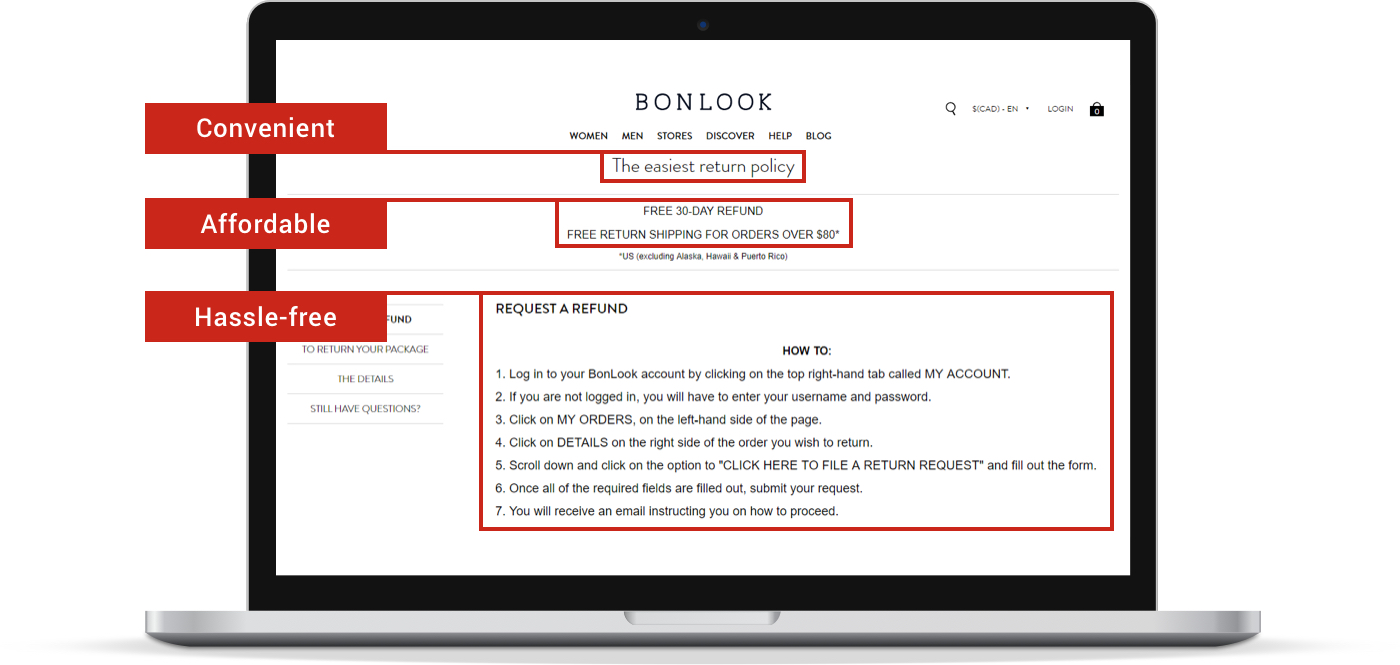
BonLook’s returns policy is ultra-accessible. A single click from their home page takes you to their policy – which shows how returns can be convenient, affordable and easy to complete. This is a great example of a returns policy that gives customers what they want.
Thinking about your shipping label strategy
Returns require shipping labels. There are two main options available to get them into the hands of your customers:
Label in box: This is when you provide a returns label in the box with an outgoing shipment. It’s an easy way for your business to provide return labels, and makes returns an extremely simple experience for customers.
Key consideration: Providing an in-box label is convenient for customers, but sacrifices some control and visibility over items being returned.Label on demand: This is when your customer interacts with your business (via customer support or your website) to obtain a return label. This option provides your business with lots of control and visibility over returns activity. Adding a step to the returns process can sometimes reduce the volume of returned items.
Key consideration: Adding a step to the returns process might reduce returns, but it can also lead to increased calls or emails from confused customers. Make sure you clearly and comprehensively describe your returns process online to minimize confusion and ensure positive customer experiences when returning items.
Technical questions?
Chat with an expertCreating your returns policy efficiently with My Returns
My Returns is a free online tool from Canada Post that helps businesses create their returns policy and manage their returns. Start by building a policy to present on your website. Use the tool view to view upcoming returns forecasts and get status updates on current returns.
First you’ll select “Create Policy”. Starting with customer-centric considerations, the tool allows you to specify details like where you’d like your customers to retrieve a shipping label (from your website, the post office, canadapost.ca, etc.).
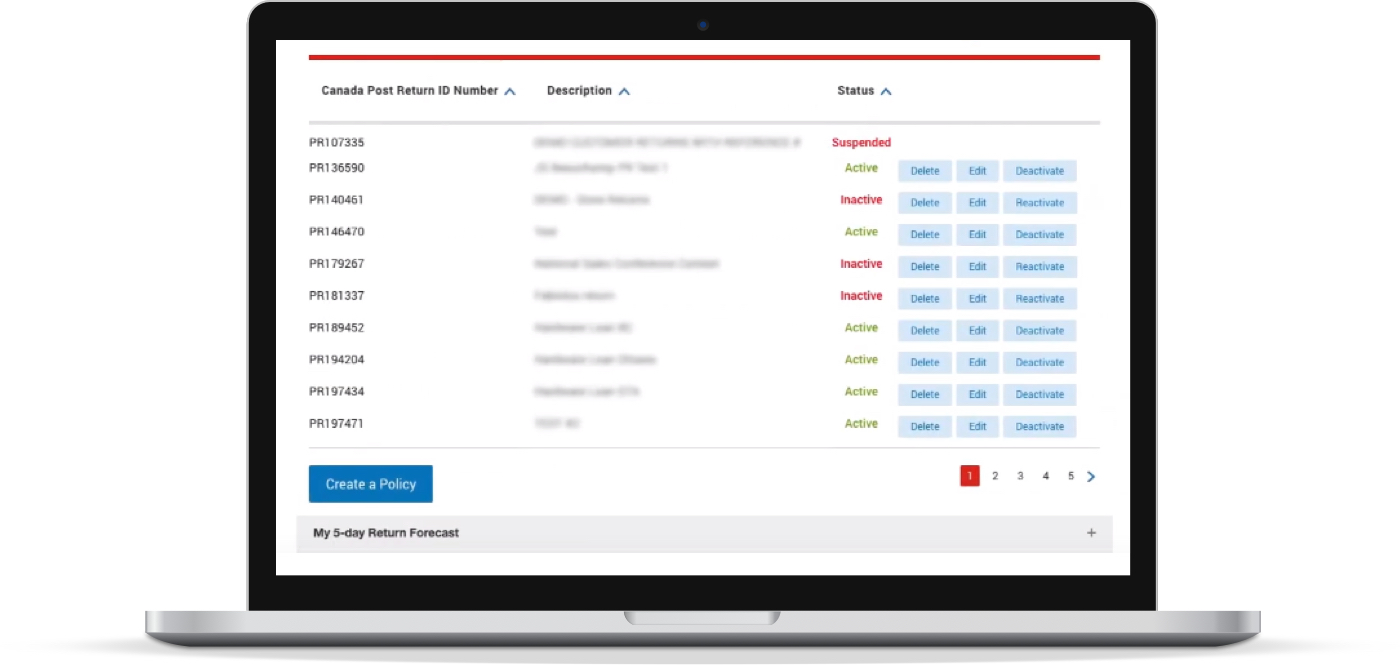
The ‘Manage Returns’ dashboard shows the status of all returns in progress.
Moving onto operational considerations, the tool will help you manage return authorization options. If you want to have more control over your returns via the label-on-demand approach, this is where you’ll be able to specify that you’d like your customers to get in touch with your team, or fill out an online form, to request their label.
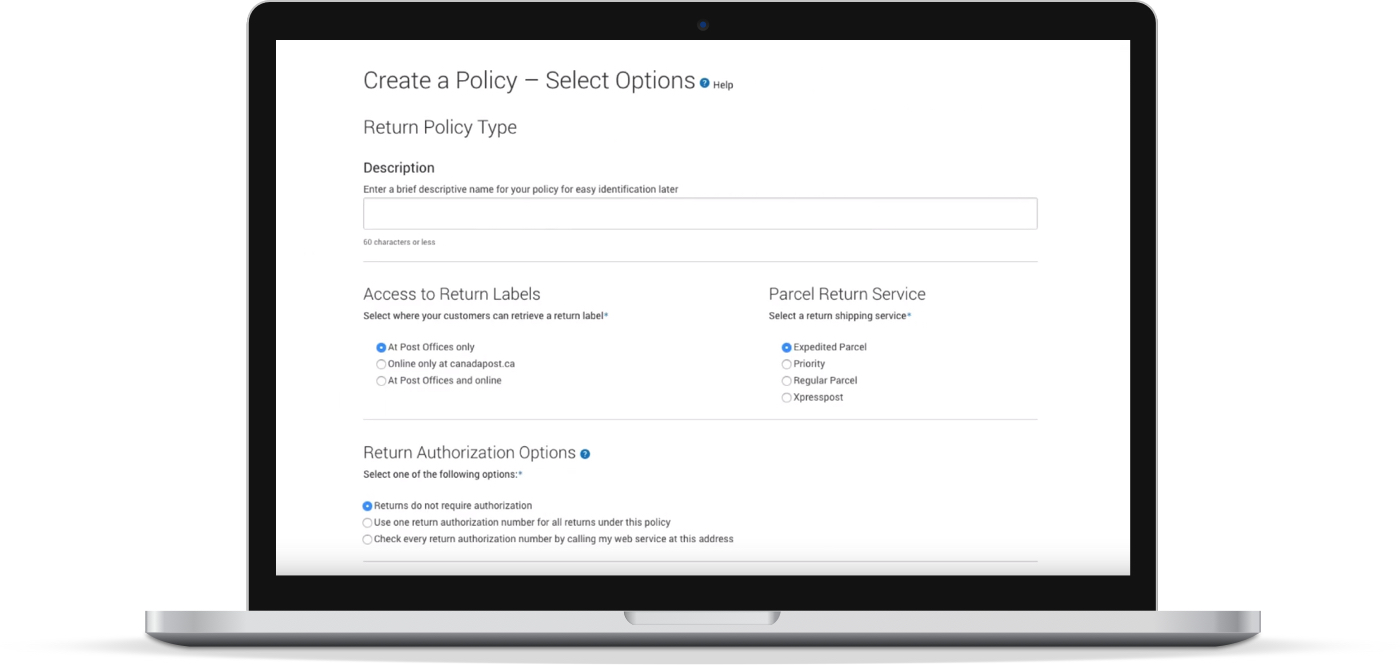
The ‘Create Returns Policy’ page allows you to create your returns policy for instant integration into your website.
After you’ve defined these options, select “Create Policy” and My Returns will automatically generate all the content you need for your returns policy page. Guaranteed to be accurate and comprehensive, this is a fantastic option for businesses large and small looking to quickly get the most from their returns policy.
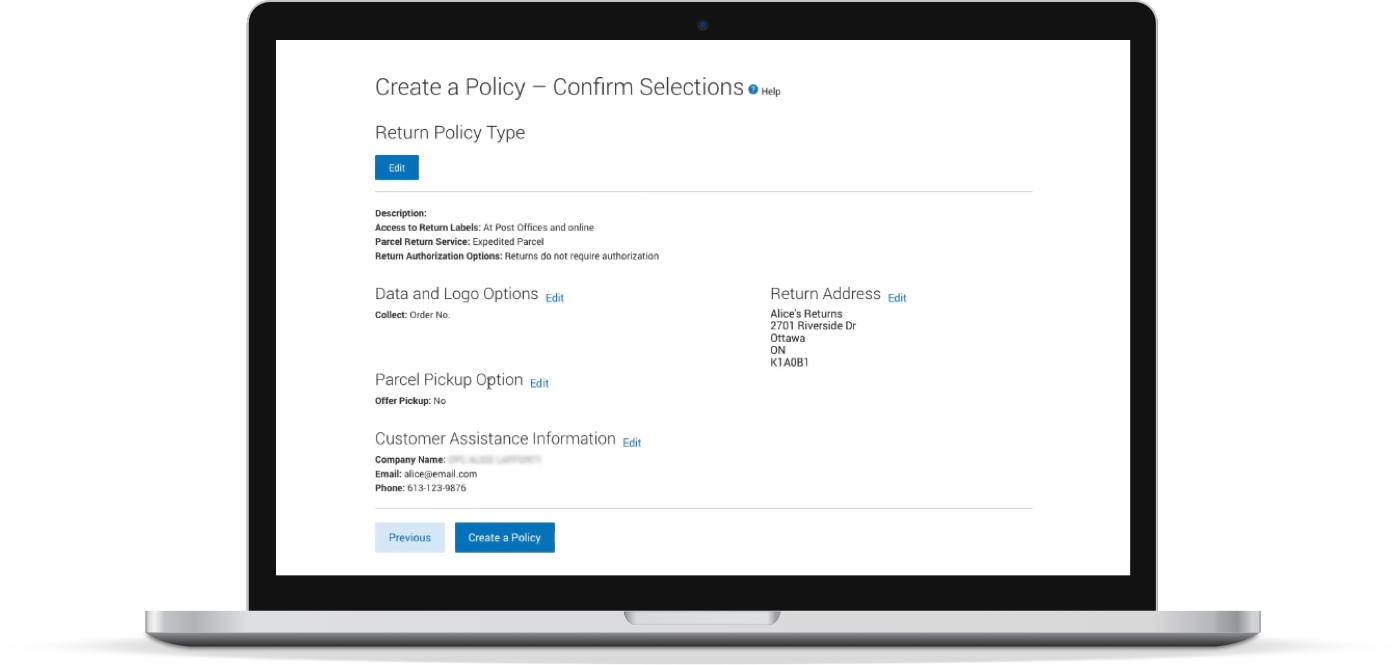
See all your returns policy details in one place before confirming.
Get the most from your returns policy
Beyond sharing this policy with customers via your website, also use it to equip your customer service team with all the details they need to smoothly process returns.
With your policy details specified, My Returns will also allow you integrate Canada Post return label services into your store. Use them to let customers generate and print labels through your website.
With your return policy set, you’re ready to start accepting returns, print labels, and satisfy customers through this critical part of the customer journey.
Determining and managing the cost of returns
If an item was defective, damaged, or simply the wrong product, customers will expect you to cover the cost of a return. If the consumer changed their mind about their purchase, it’s not uncommon for merchants to require customers to pay for return shipping.
If your brand has physical locations, convert returns into further purchases by encouraging customers to bring returns back to a store. This spares your business from having to reintroduce the product to your warehouse or deal with returns logistics, and brings potential customers back into your sales funnel.
40 per cent of shoppers are willing to pay for returns if shipping costs are shared with the retailer.2
Weigh your options when it comes to sharing the cost of returns with your customers. Consider the costs and benefits of a:
- Flat or discounted shipping rate
- Restocking fee to offset costs
- Credit for a future purchase
No retailer wants returns, but that doesn’t mean they don’t offer value. Approach customer returns as an opportunity to drive positive customer experience and you can transform returned items into life-long customers!
Sources:
1 2 Canada Post. 2019 Canadian Online Shopper Study, CPC 19-201, April 2019.
Learn how we can help!
Book a consultation with one of our e-commerce experts to learn more about returns and our suite of solutions.
Contact an expert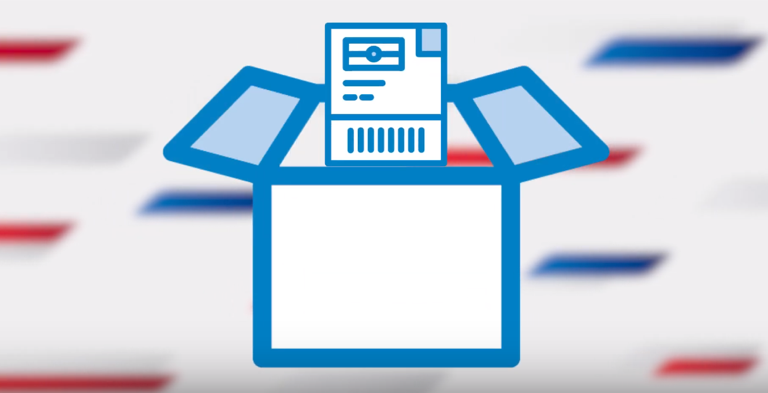 Label in box: This is when you provide a returns label in the box with an outgoing shipment. It’s an easy way for your business to provide return labels, and makes returns an extremely simple experience for customers.
Label in box: This is when you provide a returns label in the box with an outgoing shipment. It’s an easy way for your business to provide return labels, and makes returns an extremely simple experience for customers.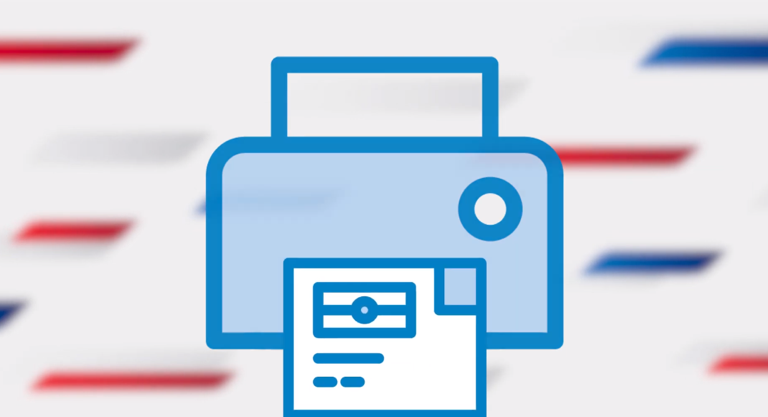 Label on demand: This is when your customer interacts with your business (via customer support or your website) to obtain a return label. This option provides your business with lots of control and visibility over returns activity. Adding a step to the returns process can sometimes reduce the volume of returned items.
Label on demand: This is when your customer interacts with your business (via customer support or your website) to obtain a return label. This option provides your business with lots of control and visibility over returns activity. Adding a step to the returns process can sometimes reduce the volume of returned items.